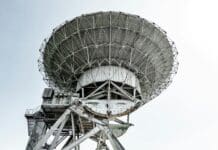This post is also available in:
 עברית (Hebrew)
עברית (Hebrew)
Researchers at the University of Surrey have developed a new AI-based navigation technology capable of locating devices in dense urban environments without using GPS. The system, known as Pose-Enhanced Geo-Localization (PEnG), uses a combination of satellite and street-level imagery to determine precise positions through visual data alone.
Published in IEEE Robotics and Automation Letters, the research outlines how PEnG reduces location error from over 700 meters to just 22 meters. The system has potential applications in areas where GPS is unreliable or unavailable, such as underground tunnels, conflict zones or regions with limited connectivity.
According to TechXplore, At the core of the technology is a two-step process. First, it identifies a rough location using ground-level imagery. Then, it refines the position using a method called relative pose estimation, which calculates the exact position and orientation of the camera. This allows the system to operate effectively using only a standard monocular camera—common in most commercial vehicles—without needing additional sensors or external references.
Unlike conventional GPS-reliant systems that can falter due to signal interference or outdated mapping data, PEnG’s approach allows for autonomous navigation in fast-changing or unpredictable scenarios. It is designed to support use cases ranging from autonomous vehicles and robotics to emergency logistics and military operations.
Researchers say the technology could be especially useful for platforms operating in constrained or degraded environments where GPS spoofing or jamming might be a threat.
The development team is currently working on a functional prototype of the system. The software has also been released as open source to encourage further research and adoption.
PEnG represents a promising step forward in developing resilient navigation solutions that do not rely on traditional satellite positioning systems, with potential benefits across a range of security, defense, and civilian applications.


























